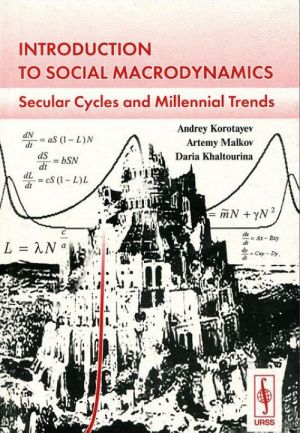Human society is a complex nonequilibrium system that changes and develops constantly. Complexity, multivariability, and contradictions of social evolution lead researchers to a logical conclusion that any simplification, reduction, or neglect of the multiplicity of factors leads inevitably to the multiplication of error and to significant misunderstanding of the processes under study. The view that any simple general laws are not observed at all with respect to social evolution has become totally dominant within the academic community, especially among those who specialize in the Humanities and who confront directly in their research the manifold unpredictability of social processes. A way to approach human society as an extremely complex system is to recognize differences of abstraction and time scale between different levels. If the main task of scientific analysis is to detect the main forces acting on systems so as to discover fundamental laws at a sufficiently coarse scale, then abstracting from details and deviations from general rules may help to identify measurable deviations from these laws in finer detail and shorter time scales. Modern achievements in the field of mathematical modeling suggest that social evolution can be described with rigorous and sufficiently simple macrolaws. The first book of the Introduction (Compact Macromodels of the World System Growth). Moscow: URSS, 2006) discusses general regularities of the World System long-term development. It is shown that they can be described mathematically in a rather accurate way with rather simple models. In this book the authors analyze more complex regularities of its dynamics on shorter scales, as well as dynamics of its constituent parts paying special attention to "secular" cyclical dynamics. It is shown that the structure of millennial trends cannot be adequately understood without secular cycles being taken into consideration. In turn, for an adequate understanding of cyclical dynamics the millennial trend background should be taken into account.
Human society is a complex nonequilibrium system that changes and develops constantly. Complexity, multivariability, and contradictions of social evolution lead researchers to a logical conclusion that any simplification, reduction, or neglect of the multiplicity of factors leads inevitably to the multiplication of error and to significant misunderstanding of the processes under study. The view that any simple general laws are not observed at all with respect to social evolution has become totally dominant within the academic community, especially among those who specialize in the Humanities and who confront directly in their research the manifold unpredictability of social processes. A way to approach human society as an extremely complex system is to recognize differences of abstraction and time scale between different levels. If the main task of scientific analysis is to detect the main forces acting on systems so as to discover fundamental laws at a sufficiently coarse scale, then abstracting from details and deviations from general rules may help to identify measurable deviations from these laws in finer detail and shorter time scales. Modern achievements in the field of mathematical modeling suggest that social evolution can be described with rigorous and sufficiently simple macrolaws. The first book of the Introduction (Compact Macromodels of the World System Growth). Moscow: URSS, 2006) discusses general regularities of the World System long-term development. It is shown that they can be described mathematically in a rather accurate way with rather simple models. In this book the authors analyze more complex regularities of its dynamics on shorter scales, as well as dynamics of its constituent parts paying special attention to "secular" cyclical dynamics. It is shown that the structure of millennial trends cannot be adequately understood without secular cycles being taken into consideration. In turn, for an adequate understanding of cyclical dynamics the millennial trend background should be taken into account.













